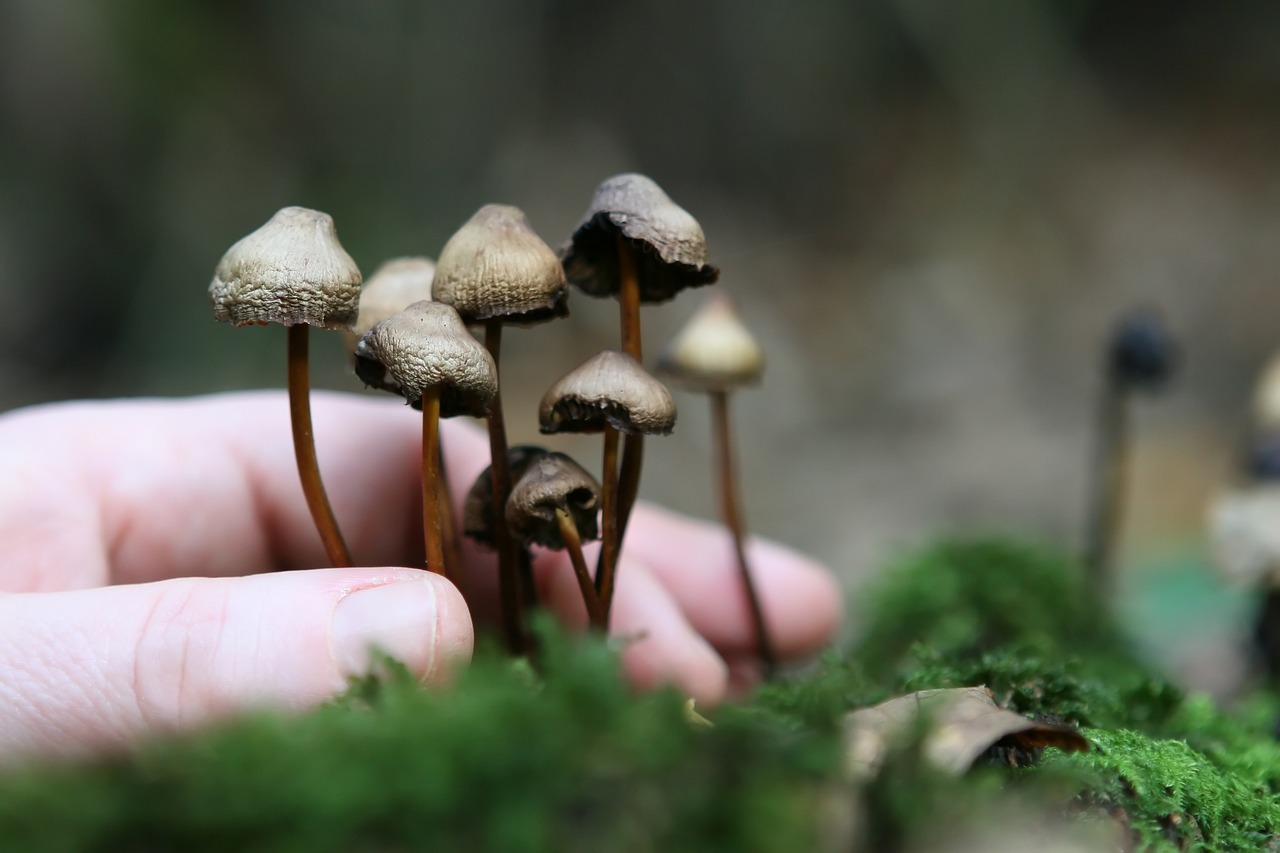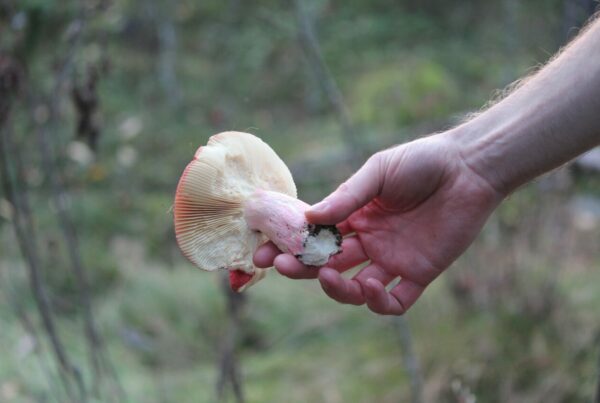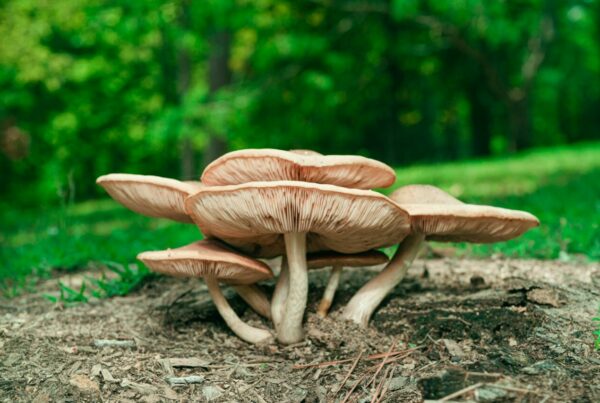Deciphering Mycelium
Mycelium, essentially the fungal root system, works as the digestive tract for mushrooms. It seeks and processes nutrients into a consumable form for the fungus, thereby nourishing it. This process’s byproduct enriches the adjacent soil, creating a nutrient-rich biomass that serves as an excellent gardening mulch.
Beyond mushroom growth, mycelium networks are critical to the health and development of many land-based plants, including trees. For example, tree roots form a mutual relationship with fungi, exchanging carbon in the form of sugars for vital minerals such as nitrogen and phosphorus from the fungus. Discover more about this relationship here.
Intriguingly, mycelium networks act as an underground plant communication system, akin to our brain’s neural networks. Recent scientific studies suggest the existence of rudimentary nervous systems in plants and trees that fungi could potentially influence, impacting processes like communication, memory, and learning. Furthermore, mycelium enhances soil health by breaking down decaying organic matter and purifying any present pollutants.
If cultivating magic mushrooms piques your interest, it’s essential to understand mycelium’s growth. While the cultivation process might be daunting for novices, learning about mycelium is a critical first step. While you can always buy mushrooms from Shroomland Canada online, knowledge about mycelium can enrich your cultivation journey.
Mycelium Growth Journey
Upon encountering a growth-friendly environment, fungal spores start the development of two kinds of mycelium. The first, known as primary or monokaryotic mycelium, is characterized by a single nucleus in each cell and is typically invisible to the naked eye. The second, termed secondary or dikaryotic mycelium, is visible and houses two nuclei per cell.
Upon sprouting, fungal spores start to form what is known as the monokaryotic mycelium, or the primary mycelium. When this primary mycelium encounters another compatible one, they can unite to develop the second stage, referred to as the dikaryotic mycelium. This secondary mycelium is the stage capable of producing mushrooms or sclerotia.
Types of Mycelia
Mycelia can be classified into three types, two of which are signs of successful cultivation.
- Rhizomorphic mycelia are characterized by their string-like extension. Identifying them is simple since, like all mycelia, they are made up of units called hyphae. The network of grouped hyphae is known as rhizomorphs. Rhizomorphic mycelia first spread out and then send back chemical signals to the colony to indicate that the area ahead is good for sourcing nutrients. The rest of the mycelia then follow suit. The hyphae at the edge of the rhizomorphic mycelia secrete peroxidase, a substance that breaks down the material in front for nourishment. The hyphae then spread over this material, distributing the nutrients to the entire colony. This type of mycelia is preferred by many cultivators because of its higher chances of mushroom production as the Rhizomorphic mycelia sprout from the substrate.
- Tomentose, or “Fluffy” mycelia, bear many resemblances with Rhizomorphic mycelia, but the arrangement of the fluffy mycelia strands is distinct. While these strands might not be immediately visible, they are indeed there. Their cotton-ball-like appearance signifies that the strands are grouped together. The growth environment largely influences whether your mycelia develop tomentose or rhizomorphic traits. There is an ongoing debate among cultivators on whether the type of mycelia affects the speed of growth or the abundance of the crop.
- Aerial mycelia appear when the growth conditions are not ideal. In such cases, the mycelia tend to grow outward instead of spreading across the medium or forming a ball. This type of mycelia, often mistaken for bacterial infection, can obstruct your mushroom cultivation, resulting in weaker, smaller mushrooms. Aerial mycelia usually occur due to lack of fresh air exchange and excessive humidity.
Mould or Mycelium?
It’s vital to distinguish between mould and mycelium. If green, blue, grey, or black patches appear on or in your fruiting box, it’s likely that your culture is contaminated. Discolouration is the main clue. However, blue spots could be just bruises.
Cobweb moulds are usually quite noticeable. Instead of the bright The Mycelium is predominantly white but often exudes a greyish shade. Its texture is fibrous and slightly fluffy. While cobweb and green moulds are not injurious to human health, they can adversely impact the wellbeing of your mushrooms.
Welcome to Shroomland Canada: Your Information Hub for Everything Mushroom
If you’re thinking about psychedelic mushrooms in Canada, consider Shroomland Canada. We’re committed to providing significant and useful information to assist you in having a safe and pleasurable mushroom journey.





